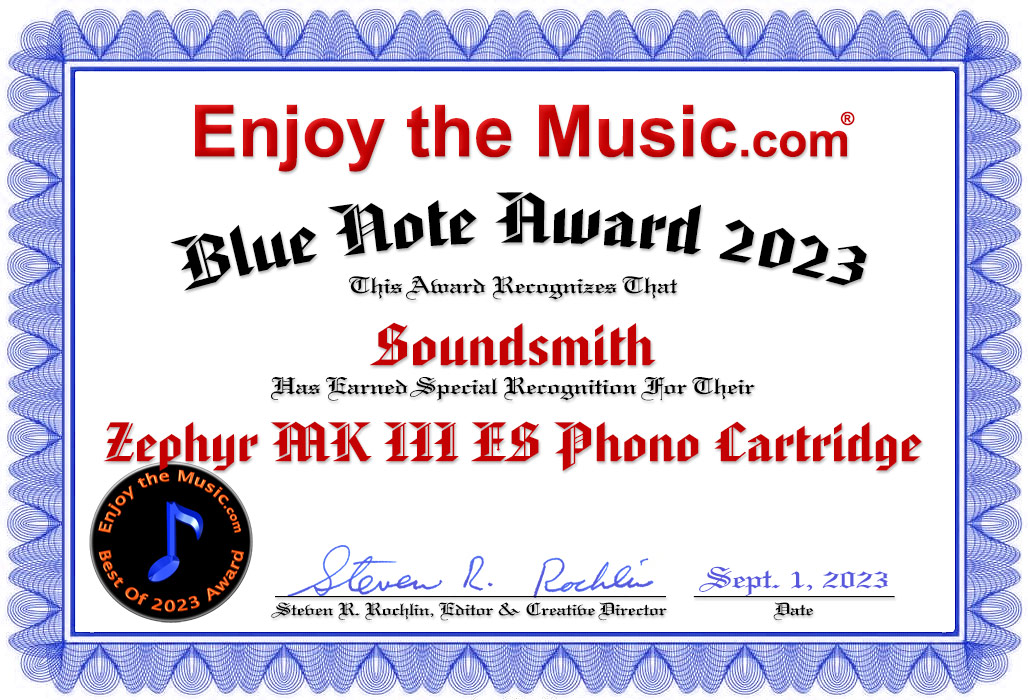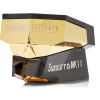How Do I Adjust Anti-skating On My Cartridge?
Yes You Do Need Antiskating
Anti-Skating (part 1, part 2)
It is just plain simple physics. BUT……the industry has gotten it WRONG. (see my notes at the end of this anti-skating message for more details)
Make sure that the anti-skating is well set; there are many ways to tell, but this is a method suggested by Frank Schroder, with which we heartily agree. PLEASE NOTE – this will not agree or work with test records designed for higher amounts of anti-skating. The reasoning from Frank Schroder for this method and level of A-S skating is as follows: the level of antiskating used should create EQUAL forces on each groove wall for *most* of the record. Since this force is dependent on the level of recorded modulation (how loud the recorded music is on the disk) setting it for a “worst case” “loud music passage” level is totally inappropriate. Setting it where it provides equal force per groove wall for where music spend 80-90% of its time (30-40% modulation) makes FAR more sense, both from the standpoint of listening, and wear.
(specific VPI information is below)
Procedure:
When you have it adjusted right, the arm will track on the SURFACE of the record (not in the groove) at the end of the record on the un-pressed flat space where the run-out groove is – it should track SLOWLY INWARDS toward the center at a MUCH SLOWER RATE than IF IT WERE ACTUALLY in the end groove. If you do that, then the best average Anti-Skating is set correctly.
The following is useful, but not all-telling. With medium or high compliance cartridges (NOT with most moving coil design) - LOOK at the position of the cantilever when it is up in the air, and when it is on the record, both at the beginning, and at the end. Look for a change in position both initially upon set-down, as well as after 1-2 minutes. If you DO THIS BEFORE adjusting as above, you will have a gross method to verify that you have problems with skating forces, as it should not change position - if it does, the A-S is VERY wrong. The best way to tell if it is very wrong is to look how the cartridge behaves on the flat surface, as described above.
There's More...
Almost always, most tables are set so they have too much Antiskating, or an adjustment that cannot be turned down enough, OR the range and fine control is terrible, or you have none.
Usually, most folks use far too much antiskating, as evidenced by the thousands of cartridges I have rebuilt over the last 40+ years – as evidenced by observation of the outer edge (right channel) of the diamond to be worn far more than the inner, or left channel.
A properly designed anti-skating is non-linear, as it should of course increase A-S automatically as the cartridge approaches the inner grooves.
Frank Schroder and I are of the same opinion about antiskating – and that renders MOST records that provide an anti-skating track totally in error – they are recorded at about 80-90% modulation – or HIGHER - and expect you to set the A-S force so that there is no distortion (or equal amounts on both channels if the cartridge tracks poorly).
The problem with these tracks is that since the required level of A-S force is a dependent of the amount of modulation, it has you adjust antiskating at far too high a level. This would be OK, if you are listening to music that is (by nature of the music) at constant maximum crescendo, without normal musical dynamics - going from loud to soft. Very few pieces of music are like this. When you adjust for this level on a “test record”, that means that you are very much overcompensated with far too much antiskating as you have adjusted it for where music does NOT spend most of its time. It spends it at about 30-40% modulation levels, and adjusting the A-S with these “test” records results in far too much A-S force; too much stylus force on the right channel, and far too little on the left.
Since there is no properly recorded track that allows proper setting of A-S (there will be such on our new Soundsmith adjustment record), the method that Frank Schroder discovered through careful reverse engineering works without tools, and without a special record.
If one sets the stylus on a smooth surface of a record (at the end, in-between the run out grooves) – the tip of the stylus has a drag on the surface that somewhat similar to what it would have if it were in a groove. This is due to a calculation of “force per unit area” with consideration of the rheology of the material – vinyl.
Suffice it to say that it is “similar” enough for this method to work well, especially since the method was reverse engineered/calibrated properly by Frank Schroder to be correct for 30-40% record modulation. It then becomes an easy matter to set the A-S and observe the movement of the arm. For a given VTF (any amount of VTF) – set the A-S so that the arm VERY SLOWLY drifts inwards when placed on the SURFACE (NOT IN A GROOVE) at the end of a record. You will have a moment to do this until the stylus “pops” into the run-out groove.
This works for ANY amount of VTF required, for ANY cartridge. It will set the A-S for EQUAL force per groove wall for 30-40% groove modulation levels, at ANY VTF, for ANY cartridge.
ANTI-SKATING for VPI ARMS - IMPORTANT ISSUES:
Some of us who own VPI tables (Yes, we do) are aware that VPI’s suggestion was not worry about anti-skating, or they gave instructions to twist the signal cable one way or the other to affect a proper anti-skating force. I have found that this is a VERY gross method, which does not allow for proper much less accurate anti-skating adjustment. VPI is now providing an anti-skating device, which we strongly insist you use. If you do not own the VPI supplied string type anti-skating device, please get one !! One must appreciate that its use does take some time to get right, as one is working against not only the skating force for the cartridge itself, but sometimes the side force from the stiffness of the signal cable as well. I have occasionally had to add small brass washers (if needed), sometimes between 3 and 5 of them, to the far small arm that does not have the nylon string attached. I positioned them between the rubber o-rings that they supply to hold them in place and at the proper height – and it allowed me to adjust the force to exactly what was needed. Patience is often required.
The VPI arm wire can sometime cause a large sideways force to be placed on the arm. We suggest BEFORE you start, unplug the connector, remove the arm and hold it upside down horizontally, with the wire now hanging down. Lightly squeeze the wire between your thumb and forefinger – starting at the tone arm, and slide your fingers all the way to the connector. This will slightly RELAX the wire. Turn the arm over, rest it on the point bearing, and gently loop or drape the wire up and down with no extra twist or tension and without rotating the wire - rotate the connector minimally to orient the red dot, and then plug the connector in. Then perform the test as below.
Make certain your have disconnected the VPI anti-skating, and perform the below test CAREFULLY, placing the stylus on the smooth section of the run-out area – NOT in the groove. The arm should skate INWARDS rapidly. Then hook up the VPI anti-skate mechanism, and begin to adjust it to get the below result. You MAY have to add some small metal washers to the far arm of the anti-skate mechanism to get the arm to slow down – to have it not run inwards quickly. It will take some patience.
When you have it adjusted right, the arm will track slowly inwards on the SURFACE of a record (not in a groove) at the end of the record on the un-pressed flat space where the run-out groove is. Again, when adjusted correctly, it should track SLOWLY INWARDS toward the center at a MUCH SLOWER RATE than IF IT WERE ACTUALLY in the end groove. If you do that, then the best average Anti-Skating is set correctly.
Again – HOOK UP THE ANTI-SKATING NYLON WIRE AND add JUST enough Anti-skating to slow it down to the desired rate as described above. Using one or more washers (if needed) on the far arm of the device will ADD anti-skating (and slow down the arms inward speed) as will hooking the nylon wire higher up on the other arm. MAKE SURE that you position the angle (CW or CCW looking DOWN at the device) so that it will NOT flip over to the right when you are at the end of the record……. PATIENCE…….PATIENCE…..
Refers to
Strain Gauge Cartridge Systems
Hyperion
Paua mk II
The Voice
Zephyr MK III
Boheme
Carmen mk II
Otello
Irox Blue
Aida








